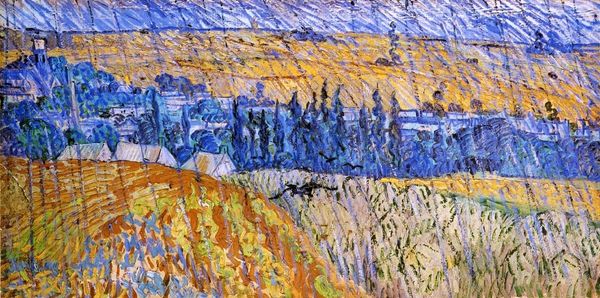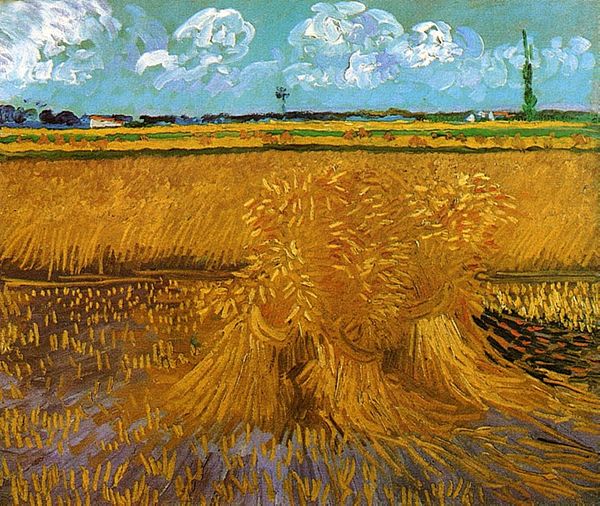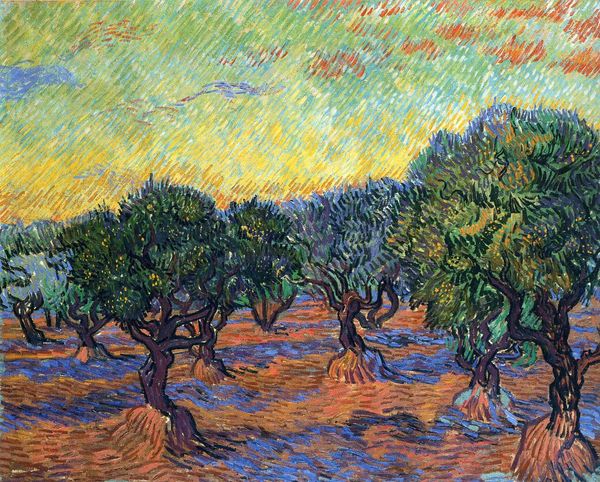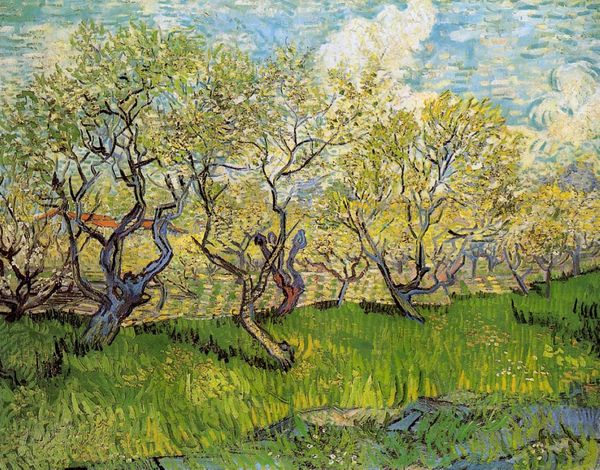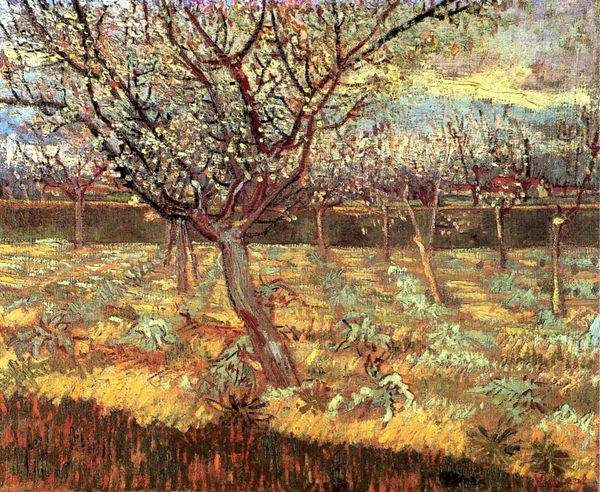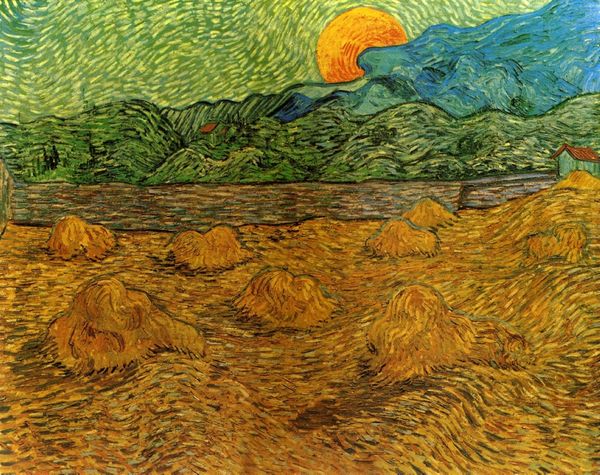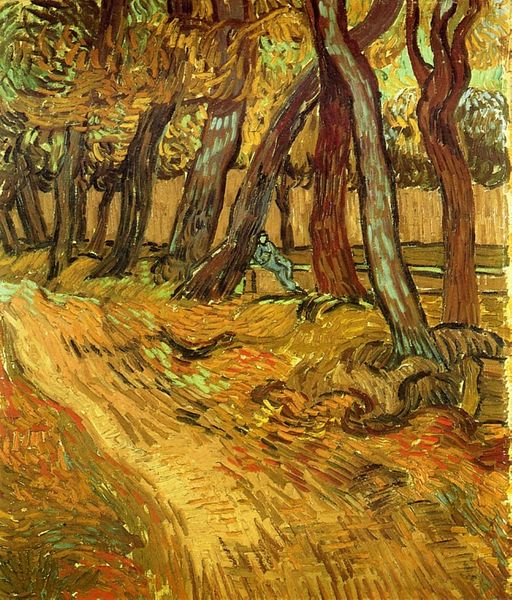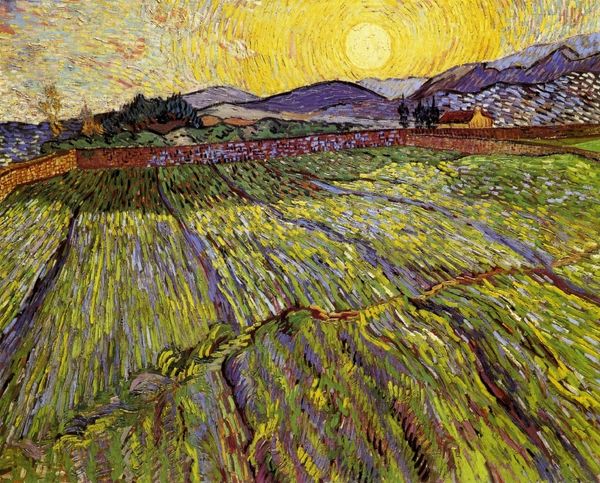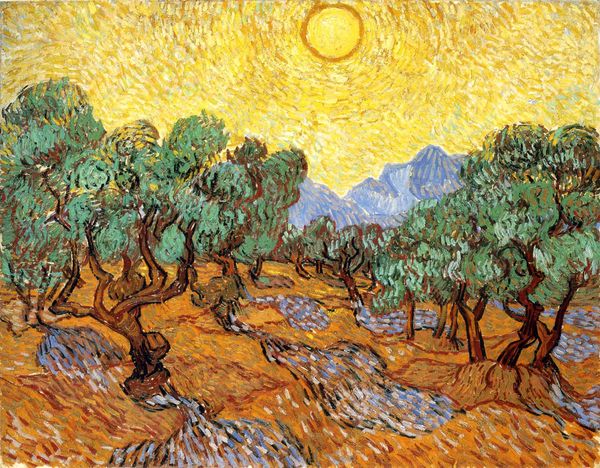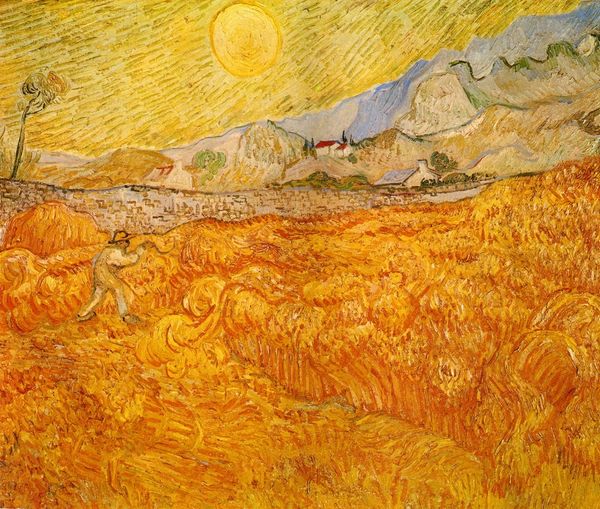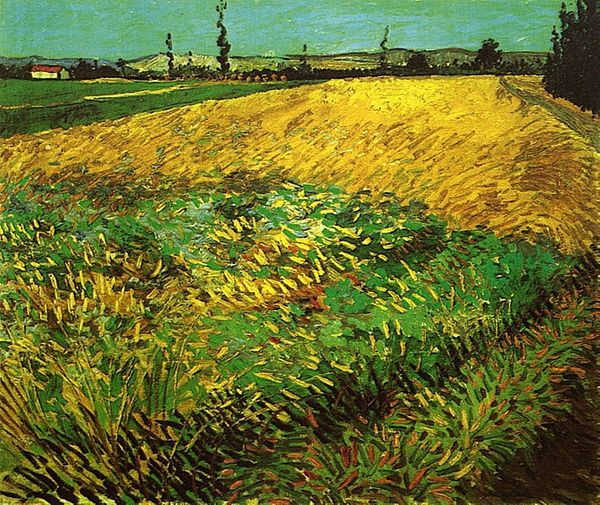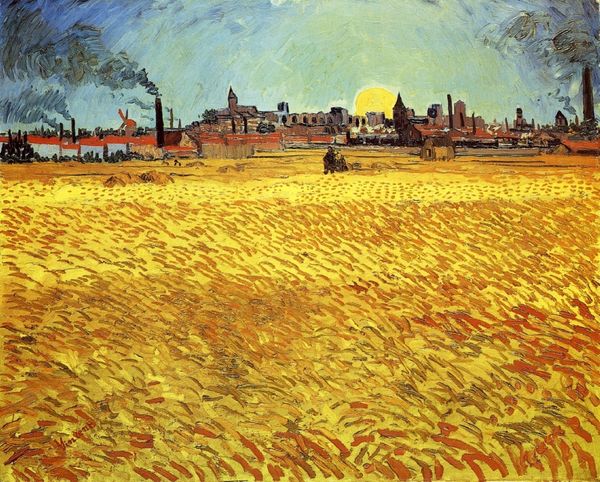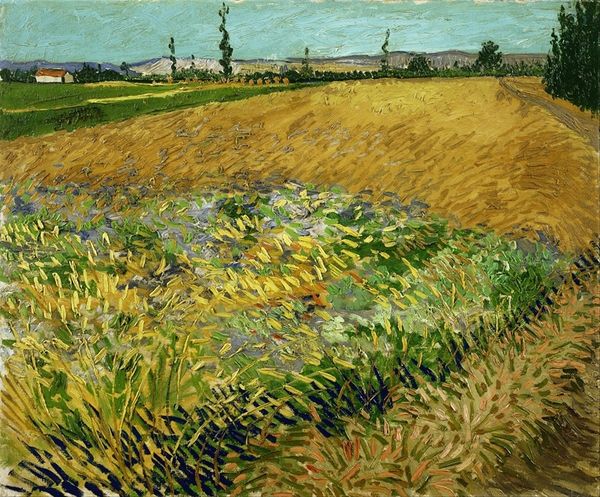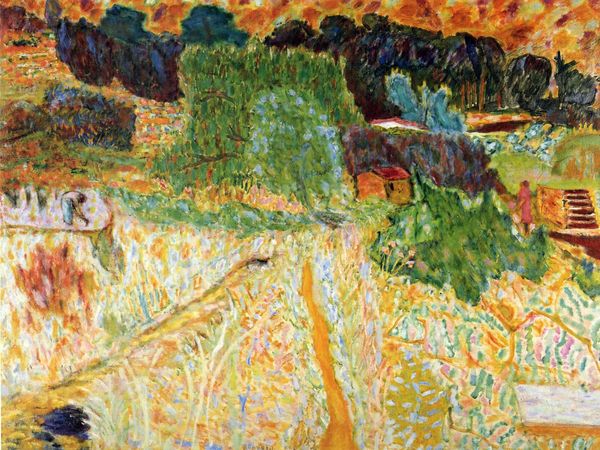
painting, plein-air, oil-paint
#
tree
#
impressionist
#
painting
#
impressionism
#
grass
#
plein-air
#
oil-paint
#
landscape
#
impressionist landscape
#
forest
#
plant
#
post-impressionism
Dimensions: 31.5 x 34.5 cm
Copyright: Public domain
Editor: So here we have Van Gogh's "Pollard Willows and Setting Sun," painted in 1888. The striking impasto of the oil paint really stands out to me, giving the landscape a palpable, almost restless energy. What do you make of it? Curator: The heavy impasto you mention isn't just about aesthetics; it's a key to understanding Van Gogh's practice. Consider the cost of paint and the sheer amount used. It indicates a shift in artistic patronage and the increasing commercialization of art supplies, wouldn't you agree? It also suggests the artist had the financial means or at least chose to prioritize materials over other needs. Editor: That's fascinating! I never thought about it in terms of the economics of art-making. Does the choice of subject matter also tell us something about the social context? Curator: Precisely! These pollard willows—regularly trimmed trees— speak volumes about rural labor and land management practices. Farmers carefully cropped them for resources, their shape entirely shaped by agricultural demands. Is Van Gogh commenting on the relationship between humans and the natural world through labor? Editor: So, it's not just a pretty landscape, but also a reflection on the material relationship between people and their environment? Curator: Absolutely. And consider the 'plein-air' approach, the labor and means needed to produce artworks outside the studio. He was deliberately engaging with the real conditions of rural life. This wasn't simply an idealized scene; it was a tangible engagement with materiality and production. Editor: I see. By looking at the materials and the processes involved, we get a much deeper understanding of Van Gogh's world. I hadn't considered the work involved in painting outside like that. Curator: Exactly! It reveals a great deal about artistic choices, economic realities, and social values of the period. Editor: I'll definitely be thinking about art in a whole new light after this. Thank you!
Comments
No comments
Be the first to comment and join the conversation on the ultimate creative platform.
